Ecological diversity: what is it and what does it generate?
Ecological diversity: measurement and diversity indices

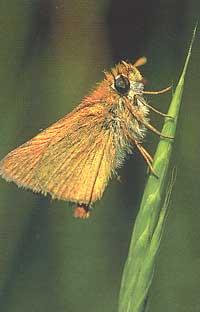
Probably the first contact with biological diversity is intuitive, since looking at nature we are aware of the integrity of living beings and the communities that make them up. However, for science intuition is not enough, so ecologists, taking as a starting point the intuitive approaches, have tried to objectively code and analyze biological diversity, developing different methods and indices of measurement.
The easiest way to measure ecological diversity is to count how many species exist, that is, to measure species richness. However, by measuring diversity, relevant information about the structure of the community is lost, since there is no distinction between numerous and scarce species. For example, a community made up of a hundred individuals of two species. This community may have two distribution premieres: one with 50 individuals per species and another with 99 individuals of the same species and one another. Intuitively we can see that the first community would be more fun than the second, but the wealth indices do not indicate anything of this type.
To avoid this problem, in addition to the richness of species, other indices have been worked that take into account the abundance of each species (see table first) and a new concept of community equity has been defined. This indicates the distribution of species in the community and is maximum when all species in the community have the same number of representatives. Some species are very numerous and others very few, on the contrary, they are small.
The size of the field in which we measure diversity can significantly influence the result obtained. Therefore, three types of diversity are distinguished. For example, when diversity has been measured without leaving a specific ecosystem, the index obtained is called alpha diversity. Once the species of this ecosystem are counted, you can reach the adjacent ecosystems and find different species that have not appeared initially.
If these new species are still counted, the initial number increases, but the increase is not always the same, since it depends on the number of species that we can find in the new places. As these new species are counted, the rate of species presence in the number of species is called beta diversity. One last option is to count all species of an extensive region and calculate their diversity. The diversity thus measured is called gamma diversity.
the impossibility of identifying and quantifying all species of a given ecosystem, which implies the immense Ian and the collaboration of many specialists. Therefore, the diversity of all species present in the study area is never measured, but the diversity of a certain animal or group of plants (birds, flower plants, butterflies, etc. ).
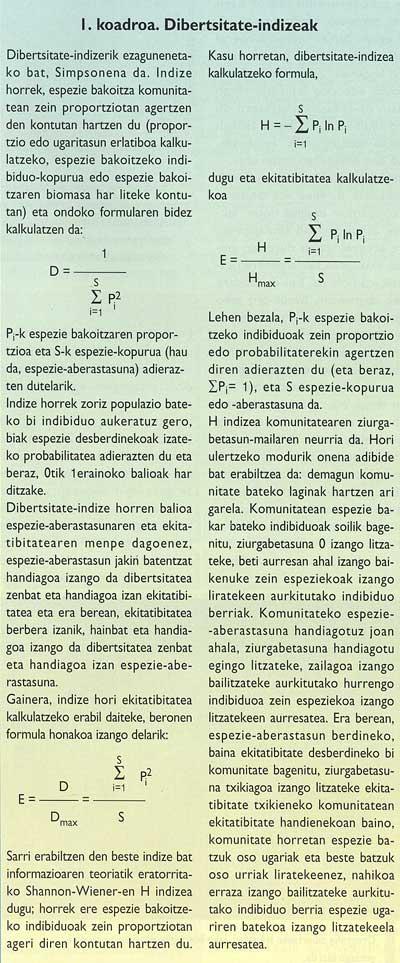
Factors influencing species richness

Not all communities have the same diversity. Some contain many species of plant animals and others, only a few. In order to find an adequate response to the cause of these differences, after the collection of experimental data by environmentalists, numerous hypotheses have been formulated. The main factors influencing species richness are analyzed one by one, but not forgetting that the diversity of any community may depend on the complex interaction of several factors.
Productivity
Plant production depends on many factors. The most productive regions of the planet are the tropical and the poorest the poles, with a fairly clear gradient passing through subtropical and temperate regions. This gradient seems to be due to climatic conditions, as the latitude increases decreases the amount of light reaching the ground, the average temperature and the duration of the time in which growth can occur.
As the size increases, a similar phenomenon occurs, with lower areas more productive than high areas. In aquatic environments, production is closely linked to depth, as increasing depth decreases water temperature and the amount of light that can reach it. Sometimes, as in the desert or in very arid areas, water scarcity limits productivity and sometimes the absence of some essential food for growth.

Since the basis of the food chain of animals is plant and many factors that influence plant production also influence the production of animals, production usually goes hand in hand with plants, that is, when there is a lot of vegetation there is a lot of herbivore and therefore many carnivores.
In general, increased production is considered to increase the availability and diversity of trophic resources, which can lead to an increase in species richness (see Figure 1). This phenomenon has been observed on several occasions, but sometimes it cannot be ensured that the main cause of the increase in diversity has been the increase in resources, since it is suspected that there may be another inaccurate cause.
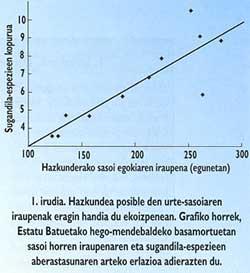
However, it does not seem that this phenomenon is universal. On the one hand, other observations and experiments have been made that point to a decrease in diversity in the increase in production (see Table 2 and Figure 2). In some lakes, rivers and marine and estuarine regions, a decrease in the diversity of phytoplactone has been observed as a result of increased primary production due to human eutrophication.
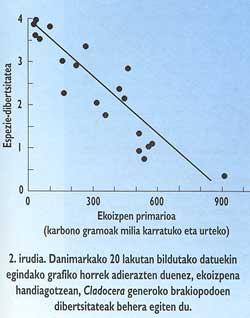
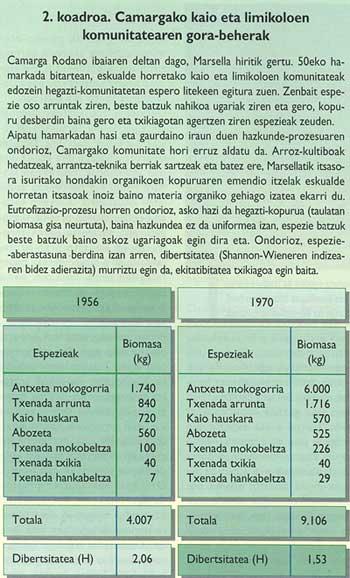
On the other hand, it is observed that two of the richest plant communities in the world, the Australian Paramos and the South African "fynbo", grow in very poor soils, with much less diversity in other communities with more nutrients. Finally, there are works that indicate that maximum diversity occurs at medium levels of production and that diversity decreases by decreasing or increasing production (see figure 3).
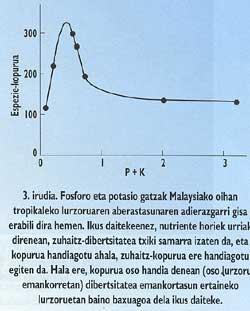
Therefore, in general, in areas of very low productivity, it is considered that their growth can cause an increase in diversity. On the other hand, in medium or high productivity, diversity seems to depend on other factors.
Spatial heterogeneity
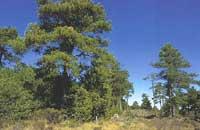
We have known for a long time that more species live in areas of amusing orography than in homogeneous places (for example, we know that in mountainous areas there are more species than in plains). Therefore, it is considered that in environments of high spatial heterogeneity, microhabitats, microclimates, shelters and, in general, there is a greater variety of resources that favor a greater presence of species in them.
Most Ians who have done this to confirm this have tried to relate plant and animal diversity and, in most cases, have shown that both are closely related (see figure 4).
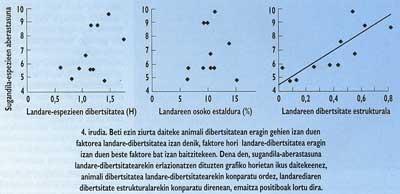
Predation
Some experiments have shown that predators can also influence species diversity. His best known work is R. T. It is the carnivorous star Painer Pisaster ochraceus. This star of the sea inhabits the intertidal region of the rocky coasts of the Pacific, where it was experienced feeding on mussels, barnacles, lapas and other species of molluscs and balans (see figure 5). In addition, these species coexisted with a sponge and four species of algae, forming a community of 15 species in total.
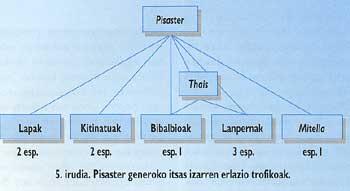
To carry out the experiment, Paine delimits a small area and expels for years all the starfish entering it, so that they did not affect other species in the area. He periodically analyzed the density of invertebrates in the area and the degree of algae coverage and compared it to a control area, where sea stars could circulate. During the duration of the experiment, there were no changes in the control area, but in the area without starfish there were profound changes and when the experiment ended, the number of species decreased from 15 to 8.
With the rabbits have been performed in Ian similar and the results have been similar. Rabbits feed on grass and are not very selective, normally eating only the largest and closest plants. As in the previous case, when the pressure of the rabbits decreased or disappeared, it was observed that the plant diversity of the pastures in which they were fed decreased, but in this case it was observed that diversity also decreased by increasing pressure.
Many experiments have been carried out similar to those mentioned with several terrestrial and aquatic carnivores and herbivores, many of which have yielded similar results, but since in ecology it is common, in some cases the results have been contrary. That is, it has been observed that predator pressure can decrease diversity (see figure 6). In general, once the pressure of predators has disappeared, the main factor that limits the growth of prey is believed to disappear. Consequently, these species can grow to the maximum and compete for resources, winning and multiplying the species best adapted to the competition. On the contrary, the populations of those who do not have the capacity to compete will decrease or disappear and diversity will decrease.

All this is considered to occur when predators feed on the most abundant species of each moment or species that would excel in competition. On the contrary, when predators eat disadvantaged species in competition, these species are considered to disappear and decrease diversity.
Competition
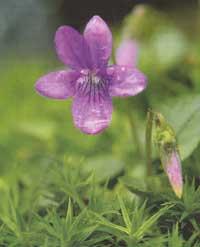
Competition for resources between different species can be double. Sometimes, especially when resources are abundant and varied, each species can specialize in the exploitation of different resources, thus minimizing competition between different species. On other occasions, if competition is hard and there are not many possibilities of specialization, the species better prepared for competition disappear others.
Therefore, in regions with many and diverse resources, competition could favor specialization and increase diversity, but in regions that do not offer specialization possibilities, if competition arises, some species should be eliminated and diversity reduced.
Environmental hardness
Extremely premiere abiotic factors (very high or low temperature, high acidity or alkalinity, high salt concentrations, total darkness, lack of water, etc.) In their media, only a few beings live with special morphological or physiological adaptations. Therefore, it is often thought that narrow abiotic conditions can have a direct effect on diversity (see figure 7).
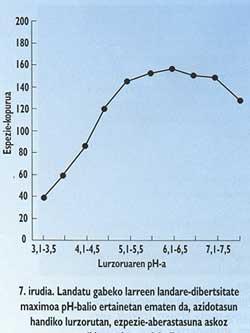
However, given that the productivity and spatial heterogeneity of these means are often reduced and often isolated areas of very small surface area, it is often unclear whether the factor that most influences diversity is hardness itself or one of those factors.
Climate variability and environmental stability
A stable or changing climate and predictable or unpredictable variability can have a great influence on diversity.
Stable climates allow the creation of beings with a high degree of specialization, any resource (nectars, fruits or seeds of a certain type of plants, some animal, etc.) availability throughout the year allows the creation of an entity that feeds exclusively on this resource. On the contrary, specialization facilitates more species in the same medium, since each species exploits a few resources, so the competition between species is less.

Therefore, great diversity could be expected in stable climate zones. But on the other hand, when the climate is changing but predictable (that is, when several marked seasons are distinguished), it could be expected that there are species adapted to the conditions of each epoch and that therefore the diversity is greater than if the climate were stable.
Unstable climates can have two types of effects on ecosystem diversity. On the one hand, the variability of the availability of resources makes it possible to avoid the presence of highly specialized species, but on the other hand, it can be avoided that the competition between species is majority and that some species disappear more vulnerable competitors. Therefore, it is also possible to think that a slightly unstable climate helps keep diversity high and that precariousness is very high or very low can have a negative effect on diversity. The rainforest, for example, is very diverse, but even more fun in places where small disturbances have occurred.
In places where a storm has formed some clearing, for example, more vegetation can be found, since the jungle is a mosaic of parts in different cooking situations.
At the moment there are few data that can be confirmed or rejected, but most existing hypotheses seem to support the hypothesis that climate stability has a favorable effect on diversity (see Table 3).
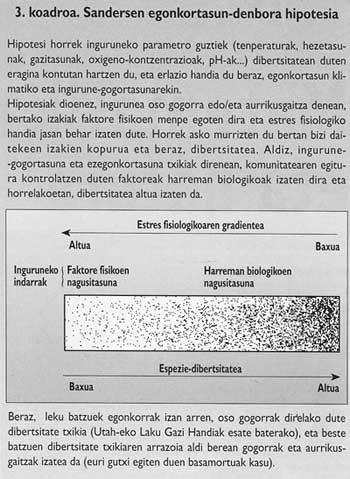
Age of the medium: evolutionary time
When communities suffer some disturbance, many indigenous species disappear and diversity diminishes. Subsequently, once the disturbance has disappeared, several species appear that occupy the place of the destroyed species (which may be old or new species evolved after the disturbance) and the colonization process makes diversity grow again.
Some authors consider that communities of low diversity are those that, after suffering some disturbance, are returning to the state of equilibrium and those of high diversity are mature communities that have not changed for some time.
This hypothesis has been used above all to explain the influence of the Pleistocene glaciations on world diversity. Thus, the richest (tropic) regions would be those regions that were not affected by glaciations, while all the other regions with less diversity would be those regions that could regain the balance (and diversity) they had lost in glaciations.
However, this hypothesis is not yet demonstrated. To do this, it must be demonstrated that in the past all regions had the same diversity and that this diversity was equivalent to the maximum current diversity, but no indications have been found in the fossil record. In addition, it seems that climate changes in the Pleistocene also affected the tropics.

Interaction between different factors
As we have seen throughout the article, there are many factors that have been used to explain the circumstances of diversity, but there is no explanation that will serve us in any case. There are factors that offer very adequate explanations in some cases, but they do not seem to have much to do with others. Other factors seem and exist that can only be used as complementary explanations, but in how many factors make the diversity of the ecosystem high and in many others the diversity is low.
Therefore, we can think that diversity is the result of the interaction of several (or all) of these factors (see figure 8). That is, diversity will be high when the combination of these factors is adequate and low when this combination is inadequate or when the negative influence of some factor is very evident.





